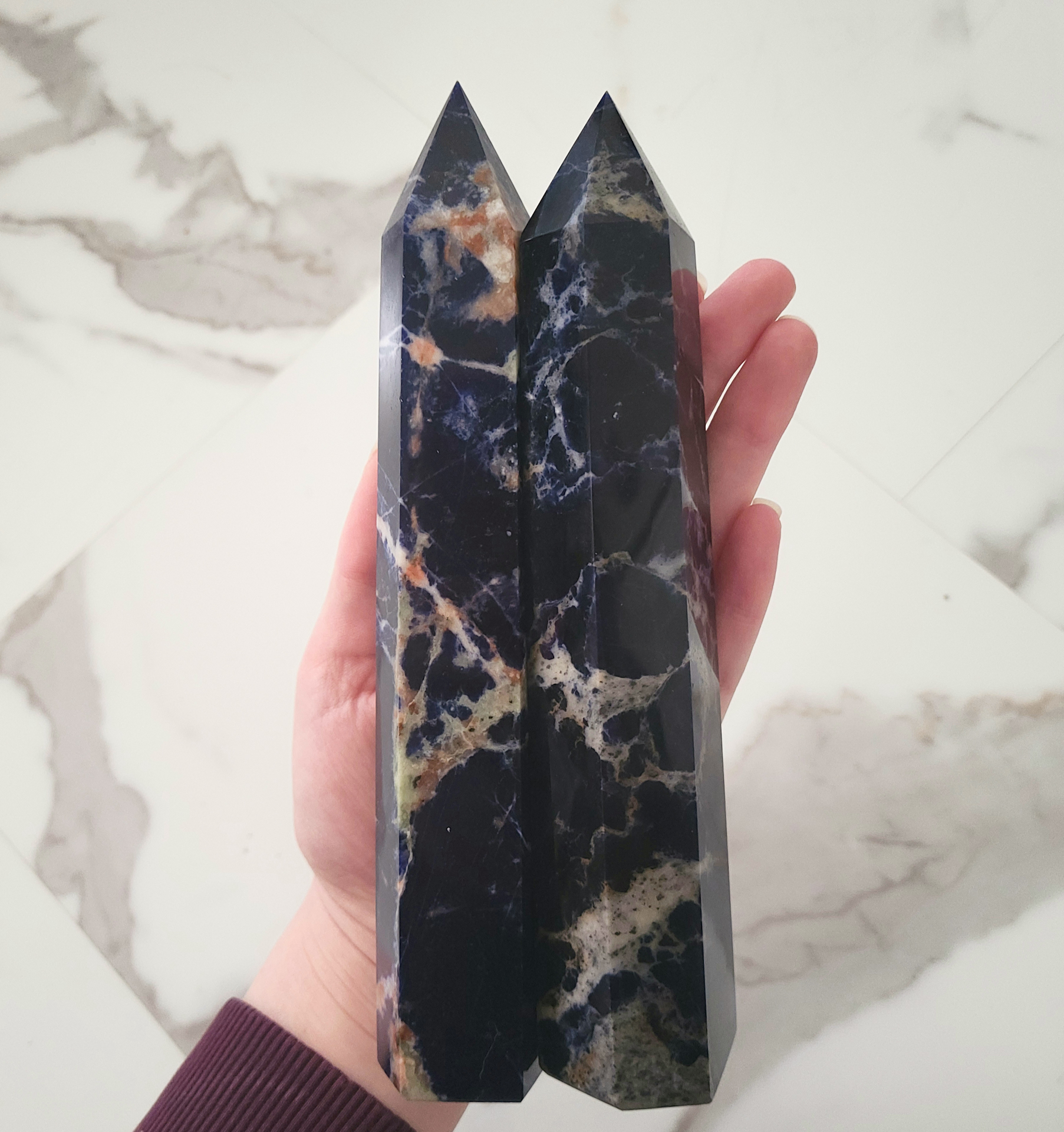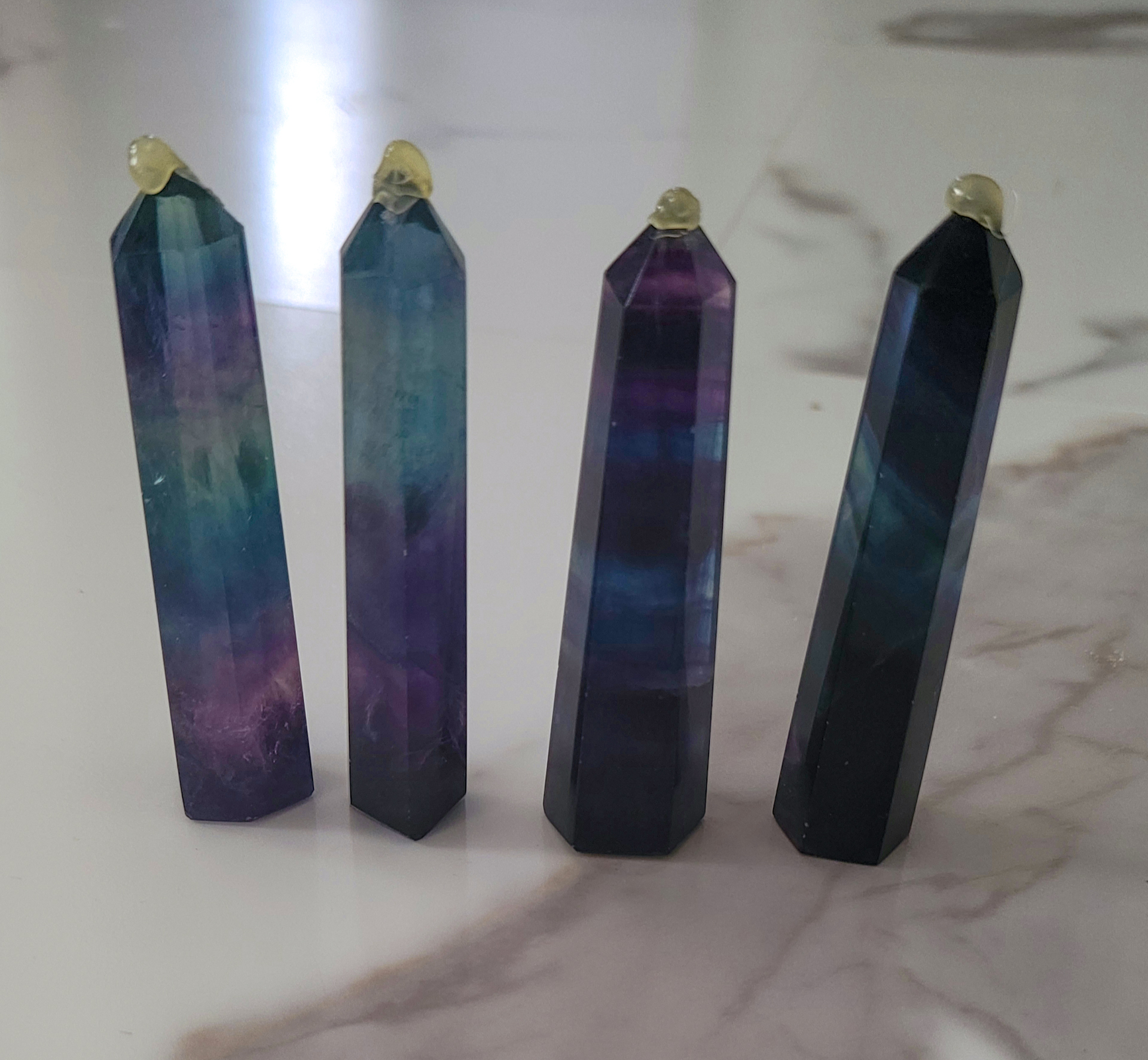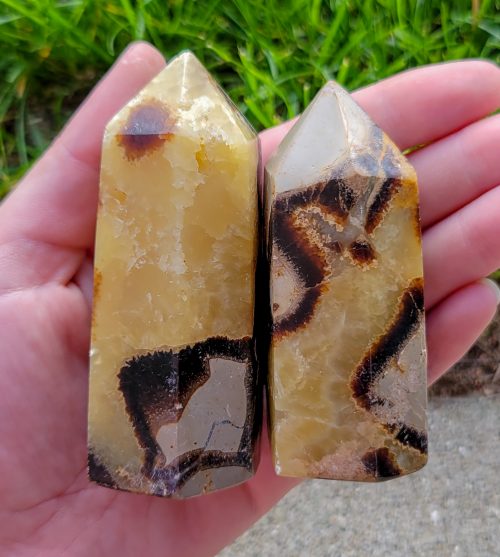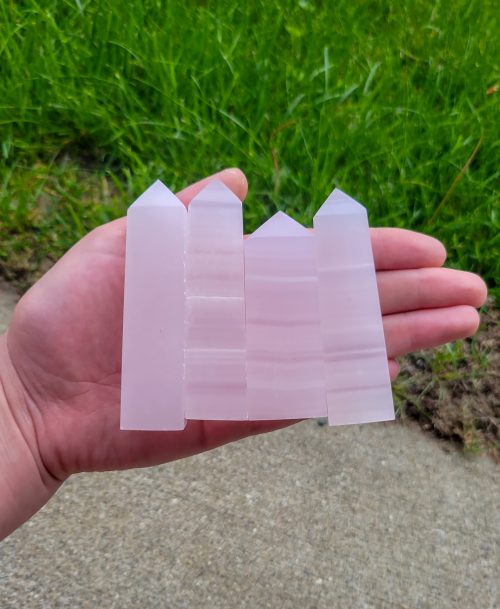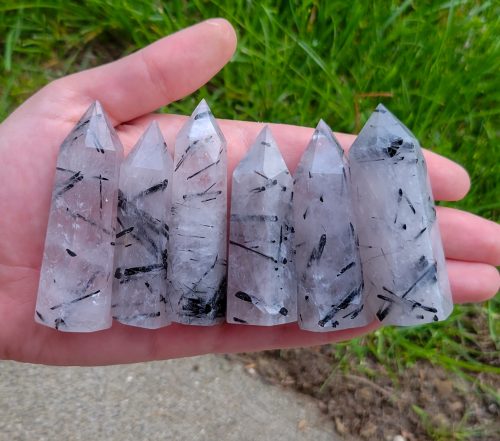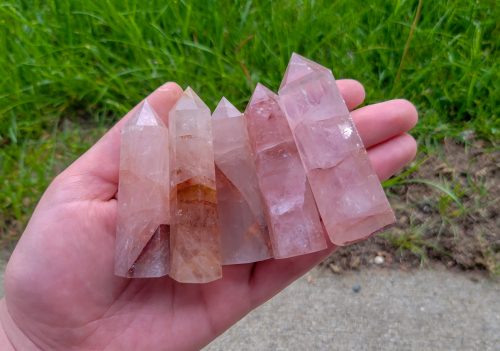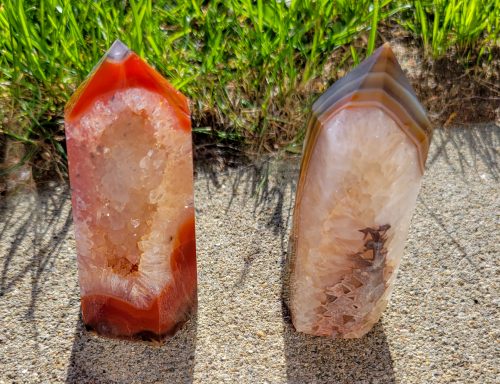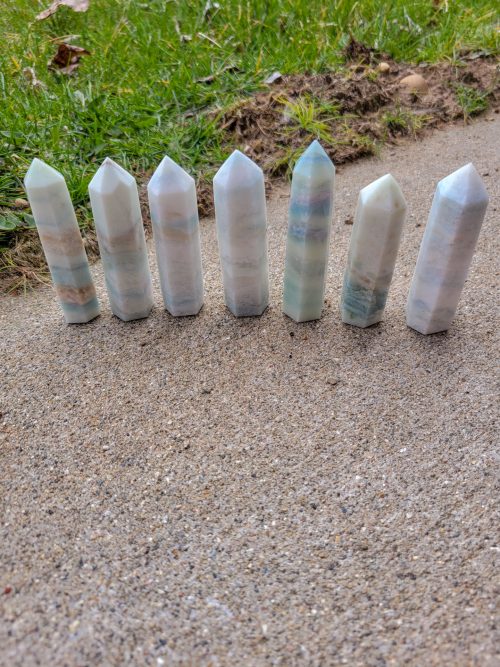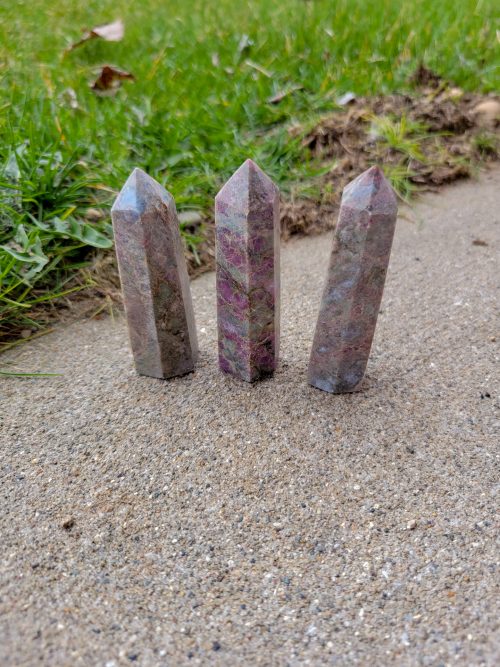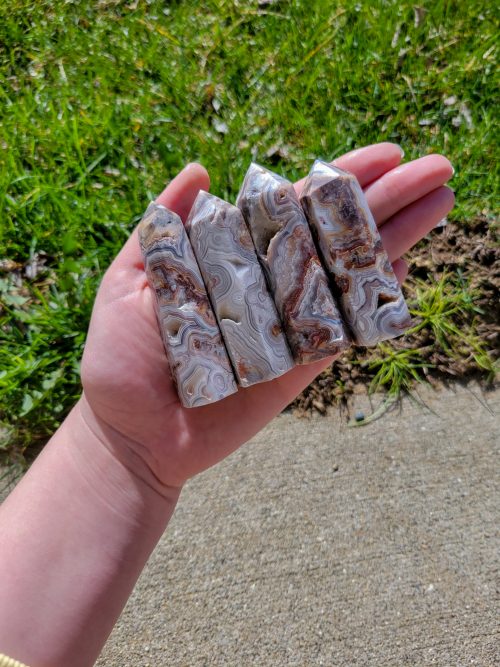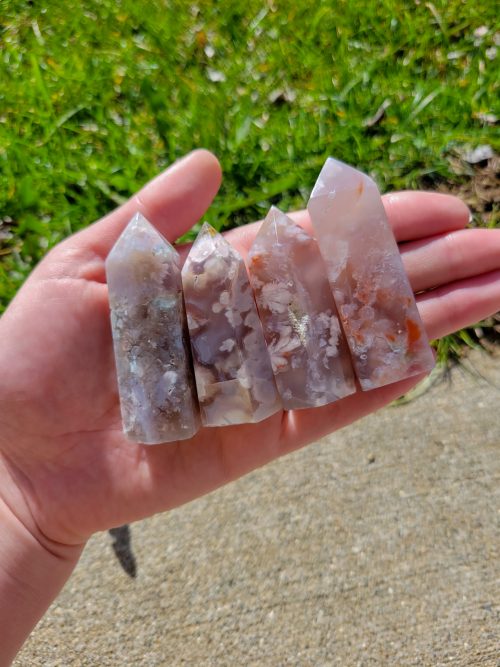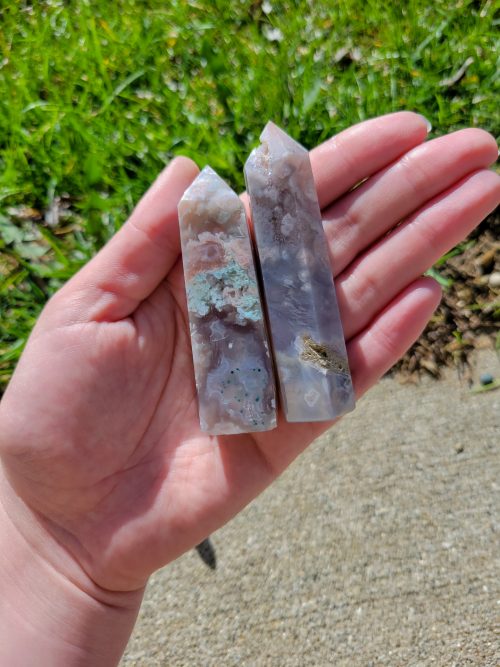-
4 x 3 x 20cm Sodalite is a rare mineral formed inside igneous rocks crystalized as a result of sodium-rich magma. The blue color comes from the rock that Sodalite is formed in; nepheline syenite, trachyte, and phonolite. Although the sodalite-bearing rock is rare, it can most commonly be found in the US, Canada, and Africa. ***Due to natural variations in stones, the appearance will vary***
-
2 x 1 x 7cm Fluorite is composed of fluorine and calcium and is formed in hydrothermal veins in the Earth's crust. This mineral can be found in all colors of the rainbow with different hues. The different colors in Fluorite are caused by impurities within the mineral. The deeper colors are found in well-formed crystals. Fluorite was originally discovered in Illinois in 1842 but is no longer mined in the US. It can be found in China, South Africa, Mongolia, France, and Russia. ***Due to natural variations in stones, the appearance will vary***
-
9cm Tall Septarian concretions are concretions containing cavities or cracks, called septaria. The septaria are the calcite (yellow) filled cracks at the center of the rock, indicating where the center of the concretions have shrunk, possibly during dehydration during its transformative journey over a long period of time. Septarian can be found mostly in the Gulf of Mexico and Madagascar. ***Due to natural variations in stones, appearance will vary***
-
7.5cm - 8cm Tall Calcite is a mineral when originally formed is colorless and opaque and can come in many different forms of translucency. It gets its beautiful colors and banding from impurities in the rocks the specimen is formed in. Calcite gets its name from the water within the mineral being rich in calcium. This soft mineral can be found all over the world; mainly in shallow marine settings such as hydrothermal veins and hot spring deposits. Many marine life species, such as crabs and coral, rely on calcite to form their shells. ***Due to natural variations in stones, the appearance will vary***
-
6.5cm Tall Clear quartz is made of Silicon dioxide and is one of Earth's hardest minerals on the Moh's hardness scale. It is found mixed in many types of minerals and also in bedrock, sand, and gravel. Quartz is naturally clear and opaque but can be found in many other colors. This mineral Earth's most abundant crystal and can be found in many different places but mostly in the Alps, Madagascar, and Brazil. ***Due to natural variations in stones, the appearance will vary***
-
6.5cm - 7.5cm Tall Fire Quartz- also known as Hematoid Quartz- is clear quartz crystals with iron deposits it them. The color can range from a pale pink to a dark rust color. The formations can form in two different ways; where the hematite forms on the inside as the crystal quartz forms its shape around it. The other way is where the hematite forms on top of an already formed crystal. These beautiful crystals, originally found in Brazil, can also be found in other countries such as Switzerland, Germany, and the United States. ***Due to natural variations in stones, the appearance will vary***
-
8cm Tall Mexican Agate is a form of Crazy Lace Agate found in Mexico. These crystals form inside of igneous rocks over a long period of time and get their banding from years of siliceous groundwater building up in the cavities of these rocks. What makes this mineral so beautiful and unique is that the color variations and banding patterns are completely dependent on the environmental factors around them. This makes it so that every formation is different and there are no two formations that are the same! ***Due to natural variations in stones, appearance will vary***
-
6cm Tall Flower agate gets its name from the flower-like formations within the crystal's body. These crystals are volcanic rocks that are mainly composed of chalcedony and quartz. These crystals can vary in color; from pink to a dark grey/purple. Recently discovered in Madagascar, these crystals are believed to go back to 2000 BC. ***Due to natural variations in stones, the appearance will vary***
-
7cm Tall Flower agate gets its name from the flower-like formations within the crystal's body. These crystals are volcanic rocks that are mainly composed of chalcedony and quartz. These crystals can vary in color; from pink to a dark grey/purple. Recently discovered in Madagascar, these crystals are believed to go back to 2000 BC. ***Due to natural variations in stones, the appearance will vary***

